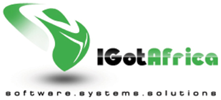MMS and why they can not be sent to anyone!
My quest to build a system that sends MMSes began with great optimism. I started by reading some documents, contacting some friends who are familiar with the industry. It quickly became clear that sending an MMS in South Africa is not as simple as it sounds - especially if you do not use a cellphone to do it.
After I sent a few tests to my own phone and that of my girlfriend I realised I was doing something wrong. Even though I had followed the API documentation to the letter I was not able to deliver MMS content to my phone. As you may or may not know, MMS messaging is simply a specially formatted SMS that alerts your phone to the presence of an MMS on the cellular service provider's network, or MMSC. Your phone then downloads that content automatically before your phone then alerts YOU that you have received an MMS.
I received this "SMS Alert" on my phone, but my phone was unable to download the MMS and produced an error message instead. I tested regular MMS sending and receiving and that worked fine. I was able to send and receive MMS messages from other cellphones. I proceeded to check the logs on my web server, where I had elected to store the MMS content, but the logs confirmed that my phone was not even connecting to the server to request the content.
After some more reading and enquiries I was told why this happens. In order for the cellular companies in South Africa to cut costs they host MMS content on a closed network which is not connected to the internet. In order to send MMS messages to any phone while hosting your content on the internet you have to "make an arrangement" with ALL FOUR cellular service provider companies.
So not only do South Africans pay more for telecommunications than most other countries, we also receive an inferior product and service - even from our boastfull cellular service providers.
I will keep this article updated as the situation changes. I am going to try and "make an arrangement" with all the cellular companies. So far it looks like what I REALLY need are some contact details for these companies. Talking to call centres only shortens my life and wastes money if you don't phone the provider you are connected to.

